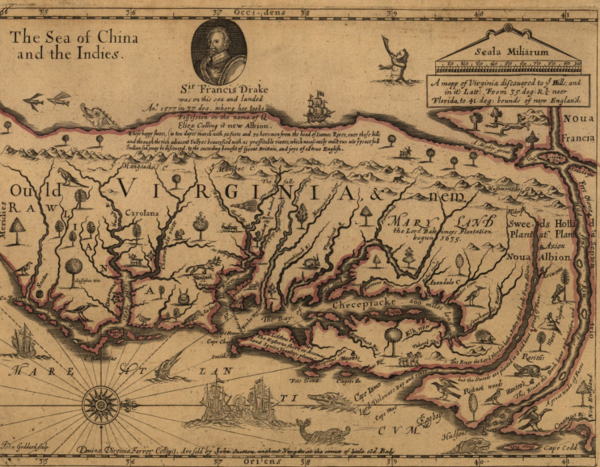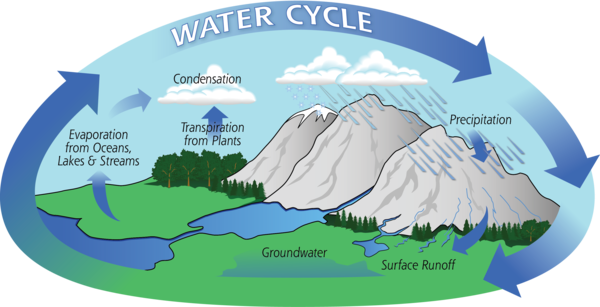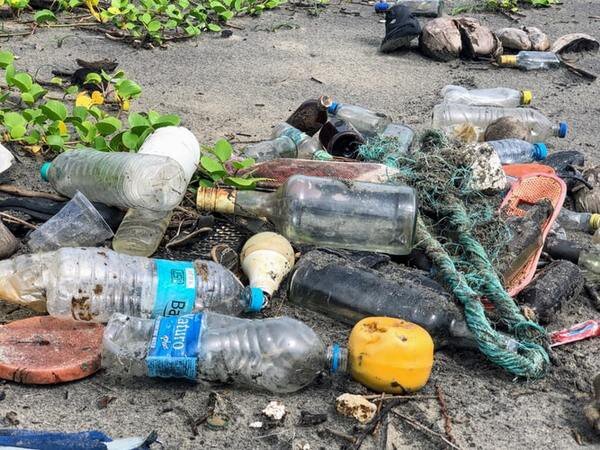WRITTEN BY: ZACH CHAMP, CONNECT WITH ME ON LINKEDIN!
Originally published at https://www.hoodiegoodies.com on April 10, 2019.
Driving down I-95 and seeing all the magnificence and wealth that is manifested in Northern Virginia in Fairfax, Springfield, Alexandria, Arlington leaves an individual dumbstruck and in awe! Dominating skyscrapers, massive elevated concrete interstate highways, and bright neon lights and electronic signs command the horizon and surrounding views. All this leaves one to wonder, “Where did this all come from?”.
There are approximately 3.2 million people living in Northern Virginia, and the region is Virginia’s most populated, productive, and prosperous sector. More people work jobs in Northern Virginia than in Washington D.C and Southern Maryland combined. Northern Virginia is the hub of the commuter-based economy that has helped shape and define the Washington D.C metropolitan area.
So why is Northern Virginia so distinguished from the rest of Virginia?
WHAT IS NORTHERN VIRGINIA & HOW DID IT BECOME SO PROSPEROUS AND BIG?
From Piedmont Woodlands to Suburban Metropolis!
The concept of Northern Virginia being its own unique region is a relatively modern idea. You may be wondering what technically constitutes the borders of Northern Virginia?
Well, Northern Virginia is essentially the area containing Arlington, Fairfax, Loudon, Spotsylvania, Stafford, and Prince William counties as well as the independent cities of Alexandria, Fairfax, Falls Church, Fredericksburg, Manassas, and others.
The region is connected through its shared history, economy, and culture which has grown over several generations to what it is today. Northern Virginia is a region of progress, diversity, and technological/scientific advancement!
To understand how Northern Virginia became so developed and prosperous you have to explore Virginia’s history.
Virginia’s wealth and growth date back to the colonial period when the area was heavily utilized for farming, especially on large tobacco plantations. These tobacco plantations were critical to the early colonial Virginia economy. The demand for Tobacco from Colonial Virginia was a primary economic factor that fueled the growth and exploitation of slave labor in the New World. The wealth created during this time established Virginia as a thriving new colony and guaranteed its continued success through much of the next century.
We should never forget that this wealth was created at the expense of people’s lives…
Later in 1790, when George Washington set aside land and created the capital of the United States in Washington D.C. the next stage of northern Virginia’s growth would begin. The creation of the new capital created a need for rural communities with farms that could supply much-needed food to the newly created District of Colombia. These rural communities would grow up over time to become the cities of Northern Virginia today.
The area did face challenges, especially during the civil war when multiple battles and campaigns caused vast destruction of the area. It took several decades during the post-war period for the necessary rebuilding and reconstruction to occur.
Several of the cities in Northern Virginia have been built over and over again, with layers of history being preserved in the ground underneath the city streets!
Fredericksburg & Spotsylvania National Military Park, Fredericksburg Battlefield
Quite a few of the old colonial districts of many of Virginia’s historic cities are actually based on the same city planning design of 7 vertical streets intersected by 3 or more parallel horizontal streets.
For instance, the layout of Downtown Fredericksburg mirrors the layout of Old Town Alexandria almost exactly. The only difference is in the buildings, architecture, and street names used.
This is just a great visual demonstration of how closely related and interconnected the region actually is!
UNDERSTANDING NORTHERN VIRGINIA & ITS SIGNIFICANCE:
NOVA is the future of technology, big business, and culture. People who live and work in the area can see there’s something brewing in the region that is beginning to cause radical and profound changes in the local communities. Northern Virginia is one of the top 4 richest counties in the United States of America and maintains one of the highest qualities of life standards for the entire country.
NOVA is home to several large and well known international and national businesses that are located in the area such as Bechtel, Mitsubishi, Nestle, Mars Candy Company, and many more! These are serious international corporations that generate revenue in the millions of dollars. The presence of such companies contributes greatly to the region’s prized economic standing in the nation.
Bechtel which has its headquarters located in Reston VA is the 11th largest privately owned company in the United States, as well as THE largest construction company in the United States!
Recently Amazon has been negotiating with public officials in Crystal City in Arlington, Virginia to relocate the Amazon HQ2 facility there. While many are excited about this potential new big business being added to the roster of Northern Virginia companies, others are concerned that Amazon may not contribute portions of its wealth as necessary to the local community. If Amazon HQ2 were to relocate to Crystal City, then an agreement would definitely need to be in place between the corporation and the community that would ultimately benefit the local citizens.
Besides large businesses, perhaps the most famous aspect of Northern Virginia’s significance as a powerhouse region in the United States is the presence of the Federal Government. The various agencies and departments of the Federal Government that are based in Washington D.C, Northern Virginia and nearby provide an exceptional amount of jobs to the regional economy and are another important reason for the area’s growth. This all began during WWI and WWII when the Department of Defense was harnessing all its resources and labor for the war effort. As the DoD created armament and munitions factories, and as the military intelligence community settled in the Pentagon, the Federal Government also grew. Likewise, so did the Northern Virginia local economy based around the Federal Bureaucracy.
Places like Reston VA were among the first suburbs to be developed after WWII. The DOD helped fund the construction of these suburban neighborhoods to house Federal employees.
The spread of suburbs and the development of urban areas is one of the visible signs of this growth in the local economy. Sleek modern family homes lay stacked side by side, copy and pasted across the once rural landscape. While economic growth is good, the suburban sprawl that resulted from Northern Virginia’s boom during the 1990s and 2000s is now starting to present challenges to the communities that have grown within.
THE FUTURE OF NORTHERN VIRGINIA:
What does the future of Northern Virginia have in store for us? Well if current trends keep holding it is likely we will see many changes to the area. Northern Virginia is currently experiencing a decade long shift in the age and ethnic demographic of the area. The area has become significantly more Hispanic, younger, and has more women. These demographic changes in the region also reflect the growing demographic changes occurring in the nation as a whole.
Northern Virginia has some of the best rated public transportation options in the entire country including car sharing, bike sharing, trolleys, metro buses and trains, and more! This is vital in an area that is perhaps infamously known for having the worst traffic in the Nation…
Yes… even though Northern Virginia has plenty of things to be proud of, there is a glaringly huge problem that is plaguing the area. It is overpopulated and the proper infrastructure and economy required to accommodate the current amount of people that live here simply does not exist.
As a result, I-95 and other major roadways are now crowded and the amount of time to make the traditional early morning commute has only become longer and longer with each passing year.
This is supposed to be one of the world’s largest interstate highway systems… and this is how it normally looks :(
The traffic problem is stressing Virginians out across the board and not just with road rage… with such a large population in the region, there is a huge demand for affordable housing. Virginia, unfortunately, has some of the highest rents in the country for a 2-bedroom apartment!
Thousands of people are moving to the area each year, but there are not enough options for them to live and work when they are competing with the hundreds of thousands that already live there. Not only must individuals and families compete for housing, but they are also competing for decent jobs and careers.
The future of Northern Virginia will have to address this growing overpopulation issue, and creative solutions need to be formulated. The next generation of Northern Virginians is growing up, and they are going to need to inherit an economy and community prepared specifically for them!
It is up to us Millennials in NOVA to create the plan of action that will implement affordable housing, and create exciting and valued careers for our home region! We are BUILDERS of our community just like those who came before us!
As technology shifts and changes so does the area. When fiber optic internet first became available, Northern Virginia was an early adopter bringing the region some of the fastest internet speeds available in the world at the time. Now with the advent of 5g internet, NOVA is leading the way again!
5G internet unlocks even crazier technological innovations for the region that will truly make Northern Virginia the home of the future! 5G internet allows for the creation of a SMART GRID, a vast internet network connecting all types of appliances, vehicles, devices, computers, and personnel to each other through the Internet of Things! Once the SMART GRID is implemented, we can expect Northern Virginia to become a tech haven with the newest innovations being available and widely used. Self-driving ‘Smart Cars’ are already roaming the roads of Washington D.C and Alexandria and will soon spread to the rest of the nearby area.
Argo Self Driving Cars are becoming a more common sight in the District of Columbia!
So, what else does the future of Northern Virginia hold with all this new and developing technology? Well, with rising concern over the environment and climate change, as well as the increased appreciation for natural spaces within urban settings, we can expect Northern Virginia to further pursue new forms of urban design that incorporate green spaces. Parks are becoming more popular, and so are outdoor farmer's markets and trade markets. People want to spend time outside, even when they are deep in the city! Designing cities to accommodate people's thirst for nature can allow for more aesthetic and appealing urban spaces, as well as more eco-friendly landscapes!
The future of Northern Virginia certainly looks bright, and we can’t wait to observe the changes and watch our region continue to evolve and grow!





























































